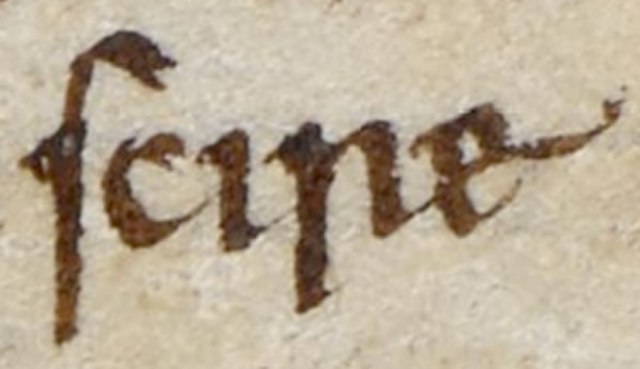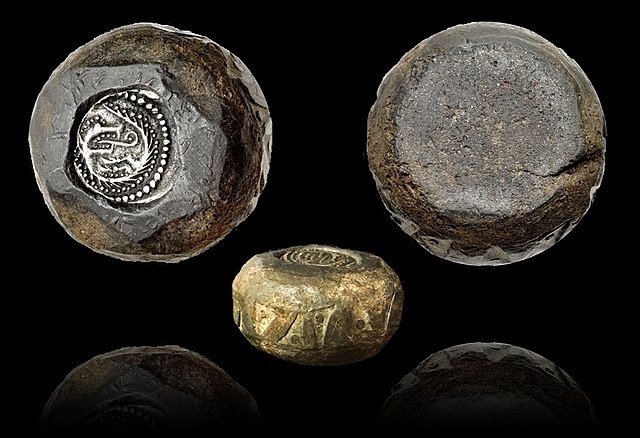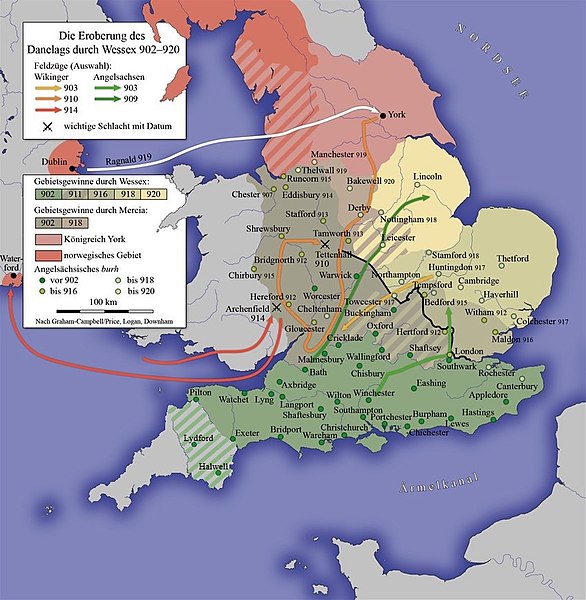Shire is a traditional term for an administrative division of land in Great Britain and some other English-speaking countries such as Australia and the United States. It is generally synonymous with county. It was first used in Wessex from the beginning of Anglo-Saxon settlement, and spread to most of the rest of England in the tenth century. In some rural parts of Australia, a shire is a local government area; however, in Australia, it is not synonymous with a "county", which is a lands administrative division.
Image: Anglo Saxon Chronicle scire (British Library Cotton MS Tiberius A VI, folio 11v)
Image: Anglo Saxon Chronicle scira (British Library Cotton MS Tiberius A VI, folio 9v)
The Kingdom of the West Saxons, also known as the Kingdom of Wessex, was an Anglo-Saxon kingdom in the south of Great Britain, from around 519 until England was unified in 927.
Imaginary depiction of Cerdic from John Speed's 1611 "Saxon Heptarchy"
Anglo-Saxon–Viking coin weight, used for trading bullion and hacksilver. The material is lead and it weighs 36 g (1.3 oz). Embedded with an Anglo-Saxon sceat (Series K type 32a) dating to 720–750 and minted in Kent. It is edged in a dotted triangle pattern. Its origin is the Danelaw region and dates to 870–930
Unification of England and Defeat of the Danelaw in the 10th century under Wessex.
The Bayeux Tapestry, depicting the death of Harold II, 14 October 1066. His "Wyvern Standard" can be clearly seen at the left side.






